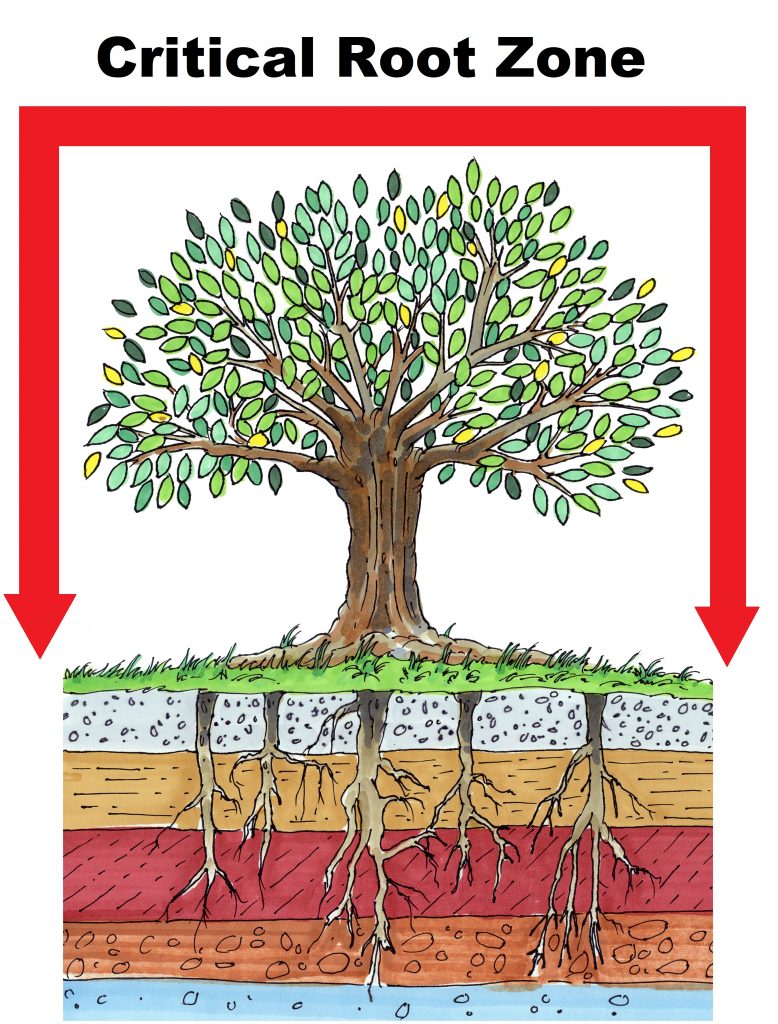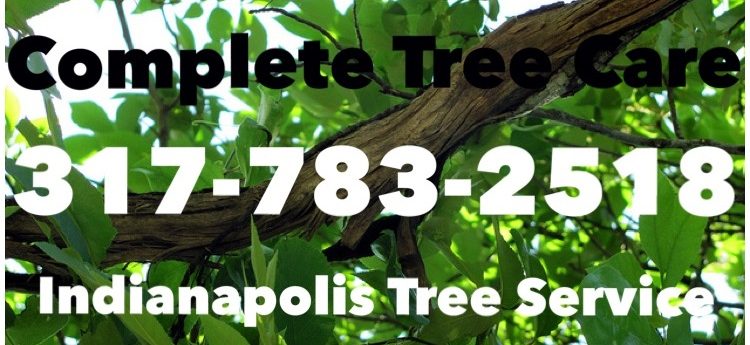Adequate mulching is an effective method for protecting your tree’s critical root zone or CRZ. In fact, in terms of tree health, mulch is just as important as fertilizer and water. It is important to know how to locate and measure your trees CRZ so that you may better protect it from inclement weather and pests.
Continue reading to learn more about a tree’s critical root zone and how to measure yours. You can do it all on your own and even include your kids for a great learning experience. All you need to get started is a tape measurer, a pencil, and a calculator!

Tree Protection Zone
The critical root zone of a tree is also referred to as a tree protection zone. Essentially, it is an invisible or imaginary circle that runs along or just outside the drip line of a tree. This area is important to a tree because it is where the most critical tree roots are located beneath the ground. That is why it is also called a “protection” zone.
These are the roots that require the most protection and care. Although you can estimate your tree’s CRZ by looking at the drip line, it is better determined by measuring it. You will need a long tape measurer, something to write with, paper to record your measurements, and a calculator to multiply your numbers.
Calculating the CRZ
To determine the actual radius of your tree’s CRZ, you must first measure the circumference of the tree trunk. Be sure to measure the trunk at 4 feet above the ground to ensure an accurate measurement. The general rule of thumb is that for every inch of tree trunk, the radius increases by 1.5 feet.
So once you have the circumference, you just multiply the diameter of the trunk by 1.5, and then you will have the proper radius for your trees critical root zone. In order to get the diameter, measure it’s circumference and multiply it by pi (3.14).
Here is an example:
Trunk circumference = 45 inches
45 ÷ 3.14 = 14.5
Trunk diameter = 14.5 inches
1.5 feet = 18 inches
14.5 × 18 = 261 inches
261 inches = 21.75 feet
CRZ = 21 feet 9 inches
In this example, you would measure 21 feet and 9 inches out from the tree trunk in all four directions, and then connect all four points to create a circle. Within this imaginary circle would be the tree’s critical root zone. It is important to keep this area adequately mulched all year long to protect the base of the trunk and underlying soil from dehydration, insufficient nutrition, disease, and pests. Talk to your local Indianapolis tree care specialist about protecting your trees with routine tree service.
Indianapolis Tree Care
Call A Complete Tree Care at 317-783-2518 for free advice regarding routine tree service in Indianapolis, Indiana. We have extensive experience in the tree care industry and provide a wide range of tree services for commercial and residential properties. Our tree care services include tree trimming, pruning, tree removal, stump grinding, stump removal, lot clearing, and much more. Call 317-783-2518 to request a free estimate for Indianapolis tree care, today.

